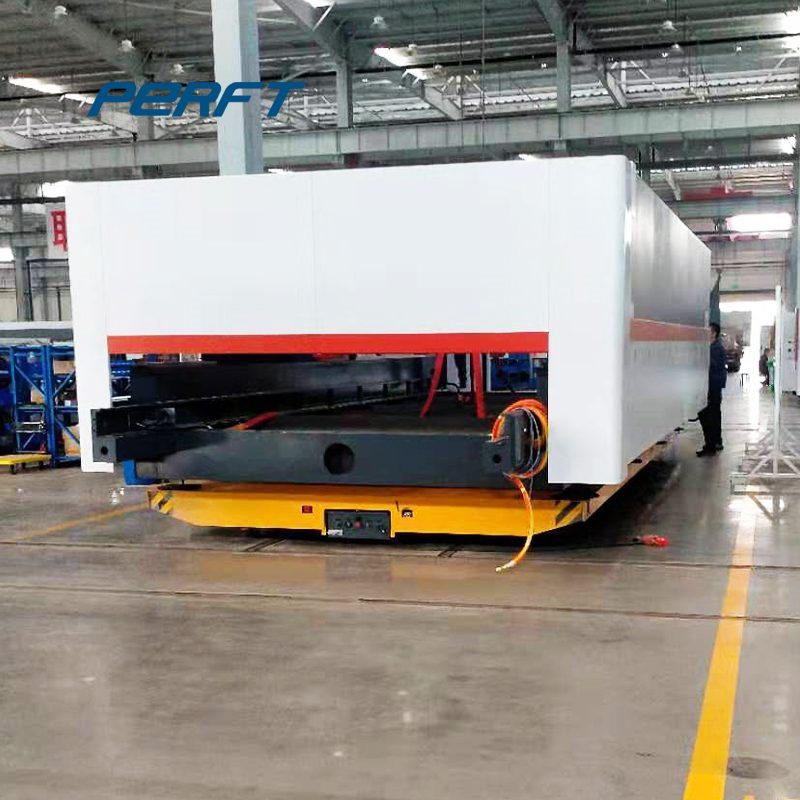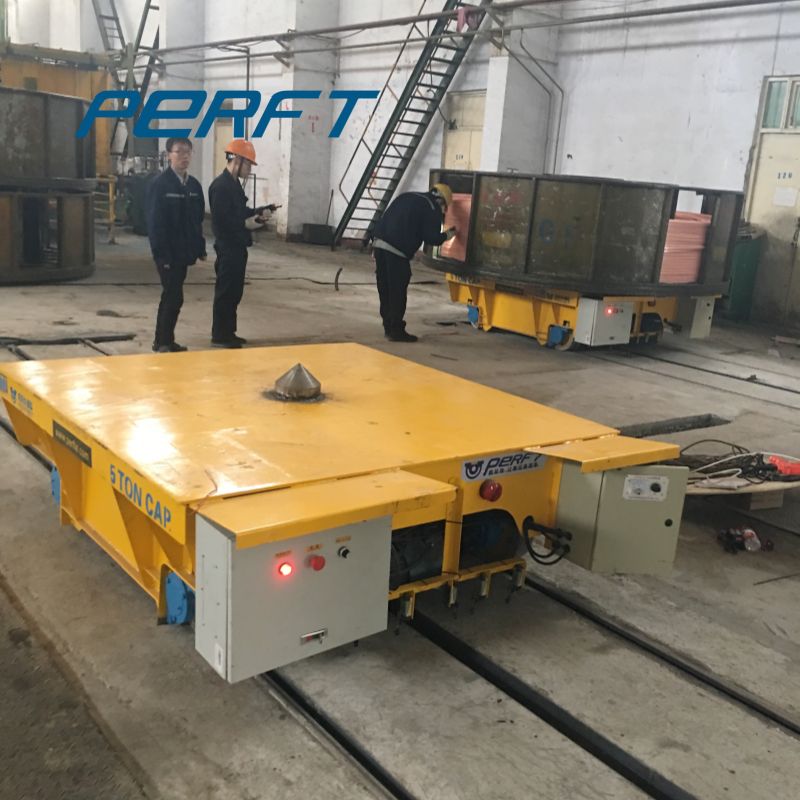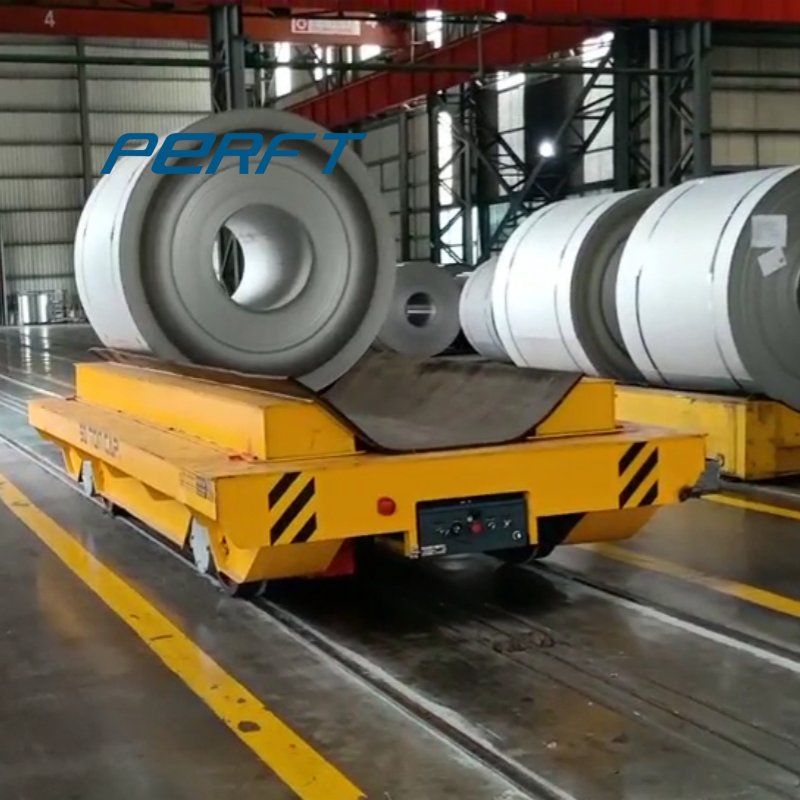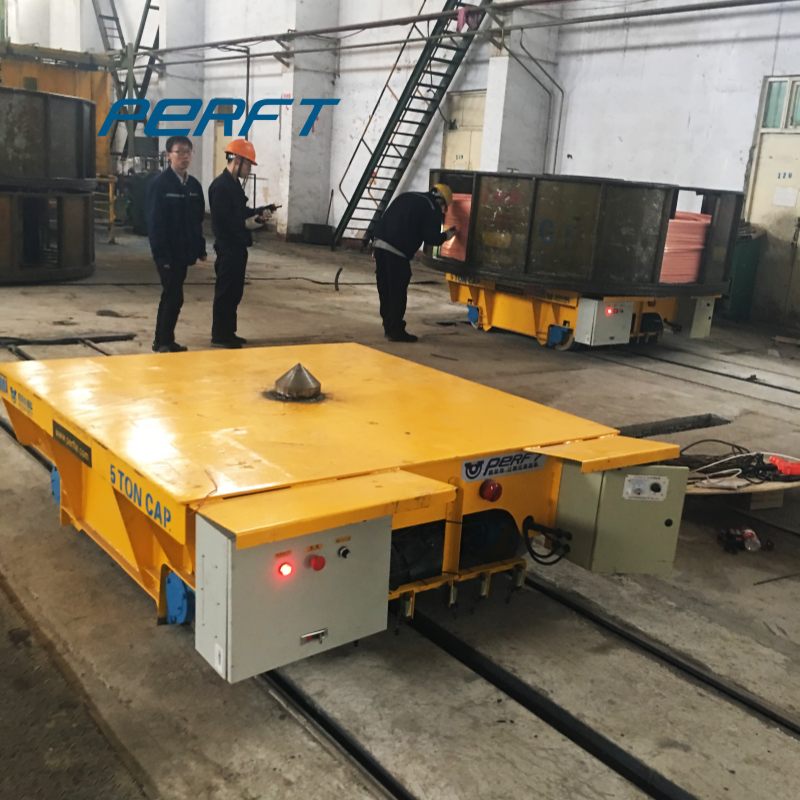Principle of operation of rail transfer car
The power supply method of the rail transfer car has: low-voltage rail-powered type, battery-powered type, towing cable-powered type, cable reel type, slip wire-powered type and so on. Low-voltage rail transfer car on the track laying requirements are high because it is the track energized type, so the track should be insulated, generally not recommended for outdoor, if laid in the open outdoor, rail transfer car manufacturers remind to do a good job of drainage measures to avoid water caused by the track power failure.

The battery rail transfer car, also known as the rechargeable transfer car, is powered by a battery and does not carry an external cable. Due to the limited capacity of the battery, it is generally not recommended for more frequent use, if you want to use the battery-powered type and work longer, you can choose to increase the battery capacity or a spare set of batteries to meet the demand. The rail transfer car has two sets of braking systems for the regenerative braking system and hydraulic braking system. The electric motor braking force and the different braking requirements provide braking force separately or together. The difference between the electric motor drive method and the hydraulic braking force can be reduced and the dual life braking force and hydraulic braking force act separately to provide braking force.
A braking composite braking system for railed transfer vehicles is a dual amplifier braking system with an electric motor regenerative braking system and a liquid K-brake system on the vehicle. The brake compound braking system may be provided individually or in combination depending on the braking requirements. The system includes a controller and control strategy for both complete braking systems.

The rail transfer car manufacturer indicates that the drive motor unit is rigid at the front-drive, rear-drive and front of the wheel side drive. Forms of hydraulic brake systems include fixed braking force distribution, electro-hydraulic brakes with modulatable power distribution and electromechanical systems. Cable-powered and reel-to-reel rail transfer cars are powered by a cable line, which is not suitable for long distances, generally around 20 m. Cable reel-to-reel rail transfer cars, equipped with a reel on the body, rely on the reel to reel in and out the cable line and can run up to 200 m. Slip wire powered transfer cars are powered by a sliding slip wire. Slip wire can be installed in the trench or overhead.
Back to List





